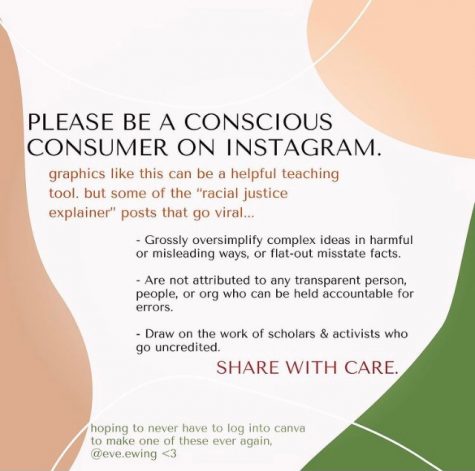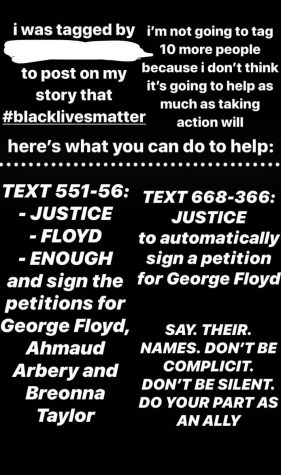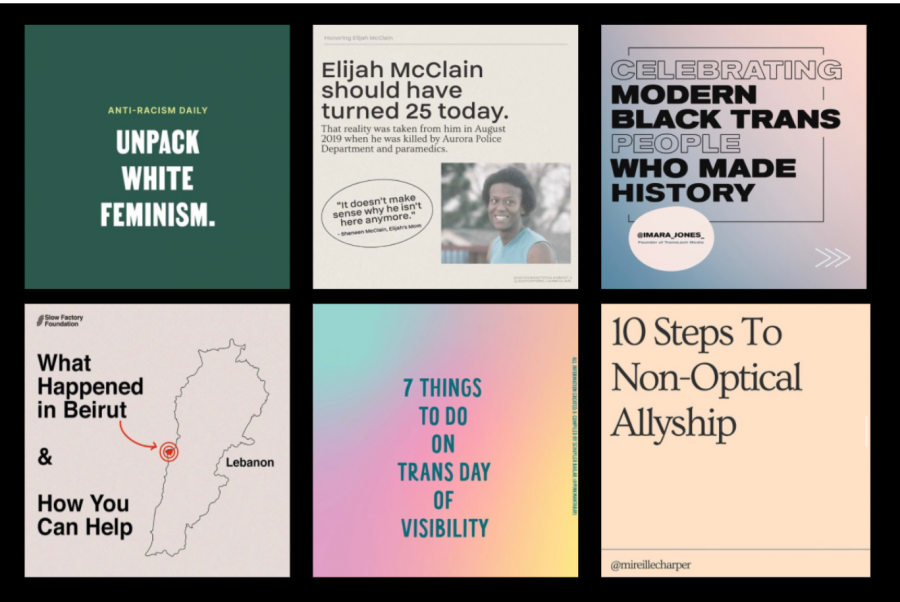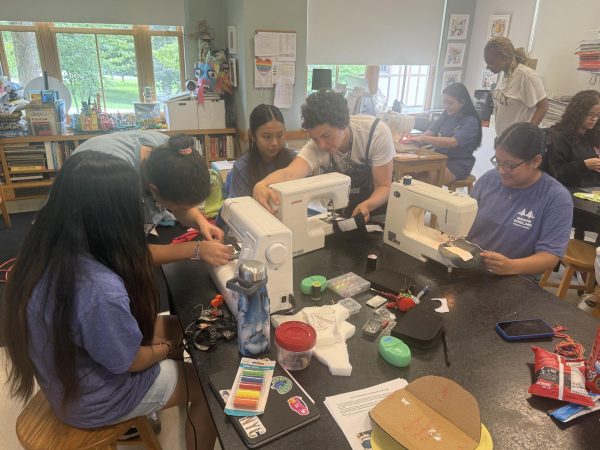Aesthetic Activism: How Instagram Transformed Social Justice
Credit: Bella Wasserman
A new phenomenon called Instagram activism has taken the app by storm following an increase of online social justice due to COVID-19 distancing. These posts are characterized by stylistically similar elements of pastel color schemes, bold text, and fun graphics meant to catch the eye of viewers and have a more approachable quality than a traditional news article. Instagram activism has sparked a debate over the merits of online social justice and whether it’s more performative or helpful.
Lists of Black-owned businesses. What’s happening in Palestine? Turkey’s femicide rates. How to correctly use pronouns. Defunding the police. What is rainbow capitalism? Any issue you can likely think of has been posted on the same pastel backgrounds with bold typefaces and whimsical graphics.
How did this new phenomenon of social justice condensed into bite-sized slides of information emerge?
Amid quarantine during the COVID-19 pandemic, a new form of protest emerged from the previously apolitical din – Instagram activism. As racial tensions reached a peak in June, protesters around the world took to the streets, and allies joined them online through catchy infographics reposted onto their Instagram stories. Picture-perfect feeds of brunch selfies and beach pics were now interrupted by thousands of black squares showing solidarity with the Black Lives Matter movement.
Anyone who’s been on Instagram in the last year has noticed a trend of stylistically similar posts covering political issues. There’s something inexplicably similar about each one, an “instagrammable” or approachable quality prompting users to share it onto their story.

The proliferation of Instagram activism is partly due to its unrestrictive nature. No one group of people is solely responsible for its spread but rather an amalgamation of each corner of the internet. Students, businesses, celebrities, everyone can participate in Instagram activism and it’s as easy as a few clicks on your screen.
Brands are latching onto this movement as well, re-posting and creating similar guides themselves. Companies such as Nike and CHNGE are part of rising corporatization of liberal beliefs. However, this sale of social justice can be problematic considering the anti-capitalist ideologies held by activists who led Black Lives Matter to global recognition.
Instagram activism itself is a controversial topic. Some see it as an act of performative activism that doesn’t make a tangible difference in social justice while others view it as an effective way of generating awareness.
Many examples of Instagram activism have edged into performative territory, some even reaching the Hackley community. Last year there was a “challenge” floating around Hackley students where people who were tagged by others reposted a screenshot on their story saying that “#blacklivesmatter”. They then tagged 10 more people who would repost it on their story thus demonstrating they too support the movement and continuing the cycle of tagging and reposting.

“People were just posting it to say that they were allies and not actually doing anything to help”, Junior Ella Rodriguez said. “At the end of the day, it shows you care more about how your followers on social media perceive you/your beliefs than you do about those beliefs and standing by them.”
Additionally, many who engage in Instagram activism unconsciously perpetuate the spread of misinformation. One danger of the infographics utilized in Instagram Activism is the minimal amount of skill required to create them. Anyone with basic knowledge of graphic design and a Canva account can create one of these threads and release it into the internet, whether it is true or not.
These posts often amass tens of thousands of likes and circulate the app like wildfire, gaining further attention with each repost, comment, and share. Thus, anyone can make an infographic about anything and parade it as the truth. Well-intending individuals may unknowingly repost these slides unaware that the information presented is false.
One instance best exemplifying this phenomenon was a post created by Plant a Tree Co that claimed for every repost they would plant a tree. The post quickly amassed millions of reposts, however, according to the group’s website, they’ve only planted 6,500 trees. Time and time again, they mislead followers into supporting their account, while they believe that they are making an actual difference.
While creators have good intentions, they sometimes speak over the very people they claim to advocate for. The viral Instagram account @feminist is run by two white businessmen named Jacob Castaldi and Tanner Sweitzer. Many have criticized them for treating their activism as a business to not-so-discreetly promote their sustainable clothing company CHNGE. Additionally, many find it upsetting and disheartening that two men are at the forefront of a movement meant to empower and uplift women.
Senior Dionne Chen remarked on this trend saying, “A lot of the time, they [white Instagram activism creators] are drowning out the voices of POC activists and instead make assumptions about our feelings. This often leads to an exaggeration of ‘issues’ POC don’t actually consider issues making people reading these posts be misinformed and believe that POC are being dramatic”.
However, some students have expressed the merits of Instagram activism despite its faults. Many teenagers don’t have the time or interest to read about current events in newspapers. Instagram can act as a mediator between the news and young people by explaining complex events in easily digestible threads on a platform that teens already use.
“I’ve learned quite a bit from following certain activists on Instagram and social media in general who create informative posts that allow you to get a more personal sense of unfamiliar topics” Junior Willow Quattrone said.
Many young people are also overwhelmed by issues of social justice, and may want to help but have no idea where to start. Instagram activism provides a simple starting point where teens can get involved in topics they care about without much experience necessary.
Ultimately, Instagram activism can be an effective method of generating awareness, however, it’s imperative that viewers act as conscious consumers of the information they see and take everything with a grain of salt.









